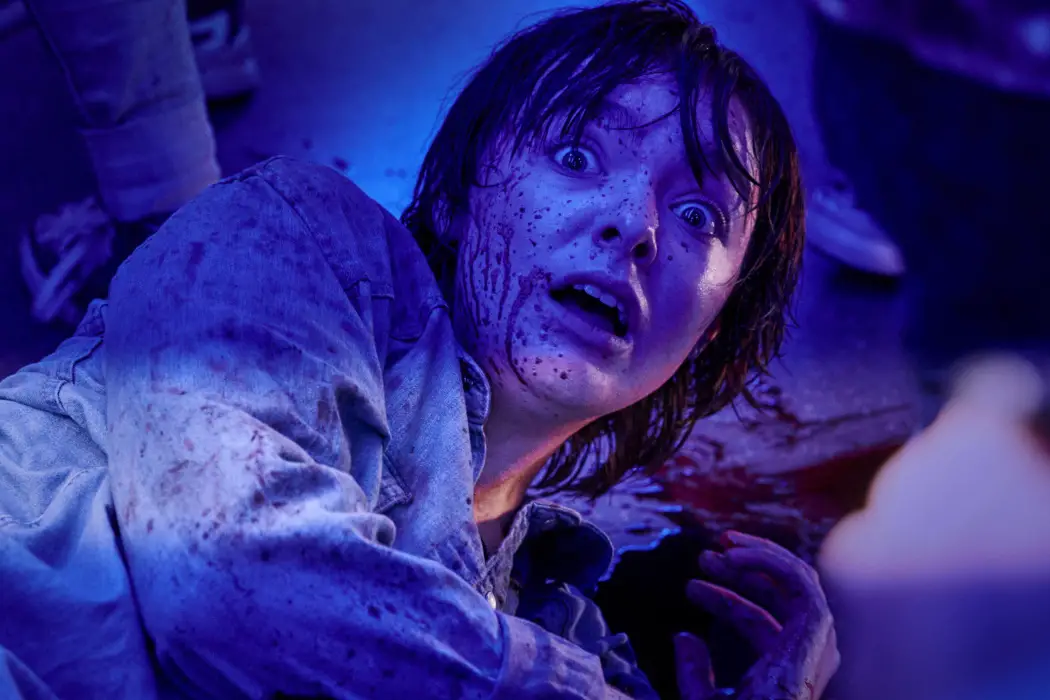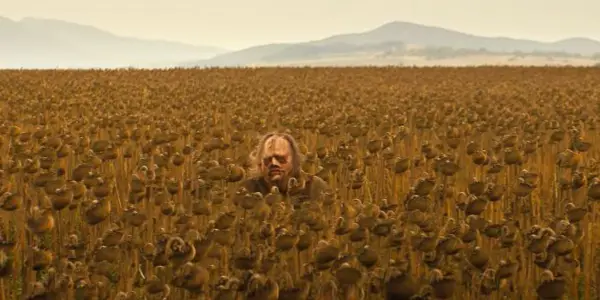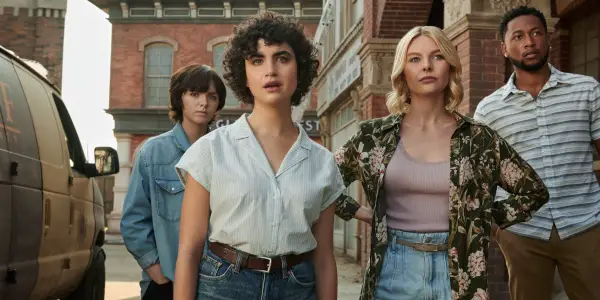TEXAS CHAINSAW MASSACRE: An Unnecessary Sequel

Stephanie Archer is 39 year old film fanatic living in…
In the world of horror, there is and has been a resurgence of classic slashers. What many of these films share in common is the return of legacy characters, a connection to the past transitioning to the future. And while this is far from a new concept, recently rebooted horrors have found their strength within its legacy and the embracing of a future generation – almost a horrific passing of the torch. With 2022’s Texas Chainsaw Massacre, the reunion of legacy characters Sally and Leatherface promised to be a heightened and intensified reunion, giving viewers another chance to return to the unified nature of past and present horror. Unfortunately, this is a massacre best left in the past.
An Unnecessary Return
The opening of Texas Chainsaw Massacre is effective in establishing that this is a direct sequel – pulling clips from the original film and interlacing them into a documentary setting. As the camera pans out from the TV, there is almost a homage to the horrific murders, souvenirs immortalizing Leatherface’s chainsaw throughout the local gas station. And while there have been sequels in the past, Texas Chainsaw Massacre immediately wipes them from memory, transitioning from the devastation of the 1974 film to present where the documentary is overheard stating that since the brutal events of 1973, Leatherface has never been seen again.

There is a mystery surrounding his disappearance that the film attempts to build, and if you are unfamiliar with the sequels that followed the original, it may have an effect on you. If you have stayed with the franchise since its induction, unfortunately, there is little sense of mystery or intrigue created. As viewers are introduced to the film’s central sisterly duo, this modern take begins to craft its poorly structured narrative. On a road trip to a town that promises them, and the friends accompanying them, futures, the first sense of predictability begins to set in.
Through Melody (Sarah Yarkin) and Lila (Elsie Fisher), Texas Chainsaw Massacre attempts to mimic the modern-day look of Franklin and Sally, the sisters resonating a sibling structure that speaks to one needing to care for the other. There is an immaturity that resonates between them, influenced by the social media that bodes success and past trauma. It is awkward and off-putting, becoming more so as the film progresses to its inevitable bloodbath. Where this year’s Scream found strength in its sisters, Texas Chainsaw Massacre fails miserably.
A Poor Investment of Character and Gore
There is no investment in Melody or Lila, or the characters that surround them – even though the characters are presented in such a way you should be. It’s an empty and hollow cry for empathy to bolster the supposed growth experienced through the film’s entirety. This emptiness, almost a slaughterhouse existence, speaks to their only role being created for the slaughter. And what a slaughter it is.

Texas Chainsaw Massacre boasts an exuberant amount of kills – brutal kills – and at times crosses the line of accepted and anticipated gore, literally embracing the concept of overkill. And this overkill might have been more acceptable if it hadn’t been presented in a cheesy and in-your-face fashion. And while the gore at first resonates the original film in its brutality and sharpness, it loses it, going more for the blood rather than the shock – an element that made 1974’s Texas Chainsaw Massacre so successful.
Though within this mess of a horror, there is something to admire. Throughout the film, there are incredible constructed shots and cinematography, framed to perfection and taking in the craft of cinema through the veins of horror. Glass vibrating on car doors, horror rising from the fields, and chainsaws finding their placement in unique and intense fashion all speak to the passion that does linger through the film and the potential skill of those behind the camera. While too far and few between, and clearly unable to salvage the film, they are worth appreciating.
Flat Character infusions
While many of the characters are introduced for the literal purpose of meeting Leatherface and his chainsaw first hand, there are two characters within the film that refuse to sit right, their nonconformity to previous horror films glaringly apparent. And while breaking from the accepted norm of slashers is encouraged, their inclusions felt shorted and not completely thought out. Sadly, these are the film’s legacy and central characters – Sally and Lila.

While it was good to see Sally (Olwen Fouéré) back in action, between performance and utilization, there is an emptiness in her inclusion and lack of continuity between the original and here. It doesn’t feel like she belongs, rather just thrown in to appease an audience and a current nostalgia-driven market. There is a sense that if it worked in other movies it would work here, and sadly, it doesn’t. Compounding the issue is this is not a legacy character played by its original actress, 1974’s Marilyn Burns having passed away in 2014. This lack of connection between Fouéré and Sally is immediately apparent, leading to a further disconnect between the film and its audience.
For many of the characters, there is a recoil to the various motivations presented, especially with regards to Lila, who survived a school shooting. While her past is supposed to speak to her future, it falls flat and is poorly integrated into the film. Honestly, it would have been better if it wasn’t included at all. This is not to say that the horror of surviving a traumatic incident can not empower and imbue a character with depth, but it needs to be utilized well. This is not the first film or TV series to use a school shooting within its narrative or as a part of a character’s back story, and it certainly won’t be the last, yet it felt poorly considered and handled.
Conclusion
The quick pace of Texas Chainsaw Massacre will leave viewers with whip lash, reeling in the aftermath of poorly utilized bloodshed and crafted characters. There is little believability to the incident each finds them in, the power of what made the original such a success clearly forgotten. Unnecessary and poorly planned out, Texas Chainsaw Massacre is a sequel easily forgotten.
Have you seen Texas Chainsaw Massacre? What did you think? Let us know in the comments below!
Texas Chainsaw Massacre is streaming now on Netflix!
Watch Texas Chainsaw Massacre
Does content like this matter to you?
Become a Member and support film journalism. Unlock access to all of Film Inquiry`s great articles. Join a community of like-minded readers who are passionate about cinema - get access to our private members Network, give back to independent filmmakers, and more.













